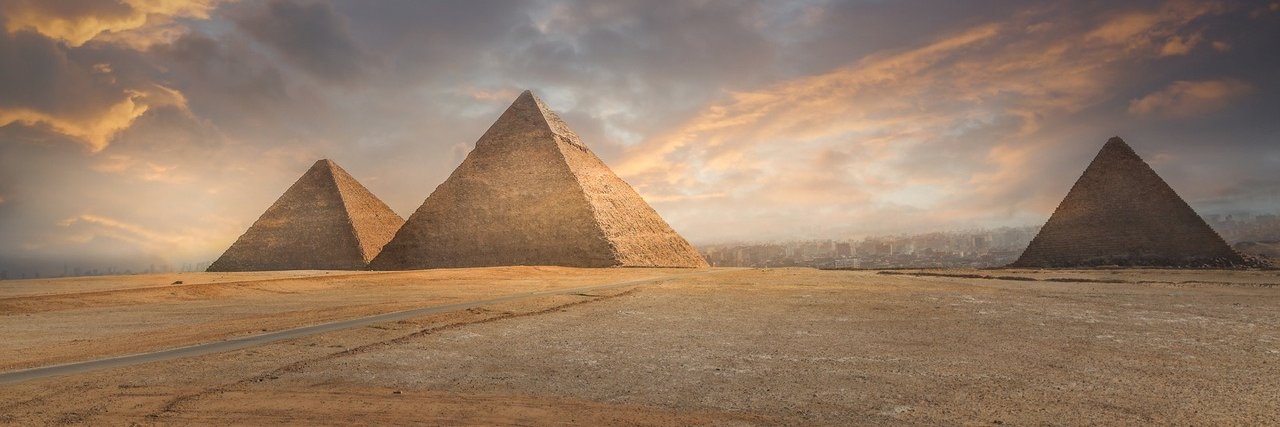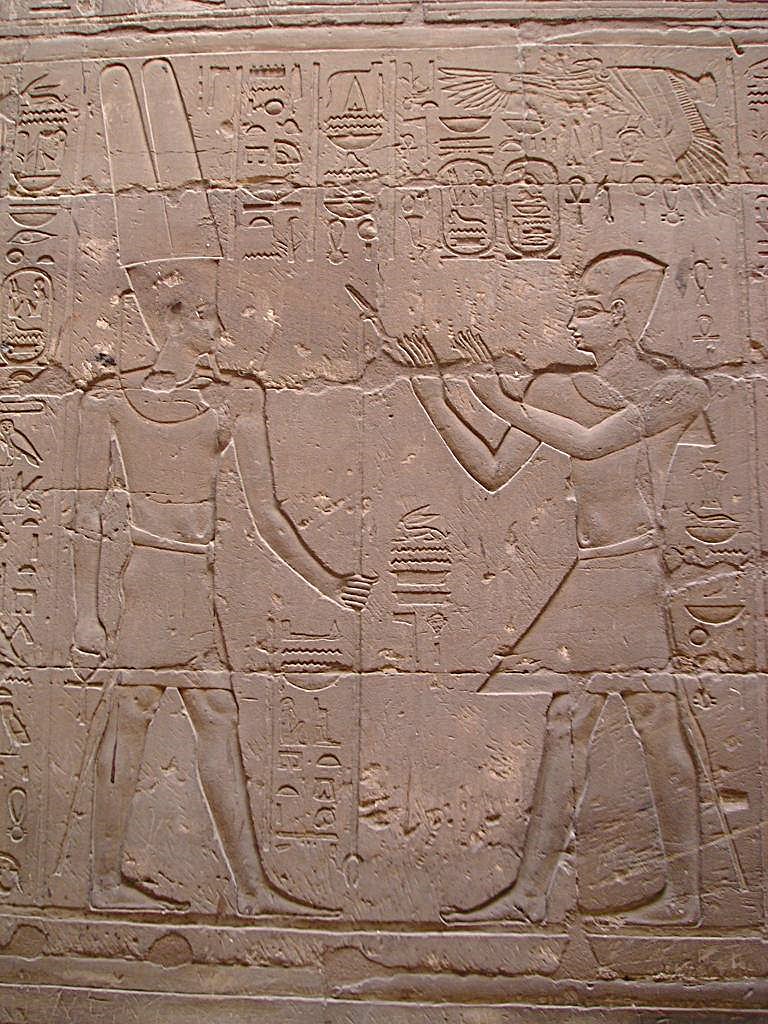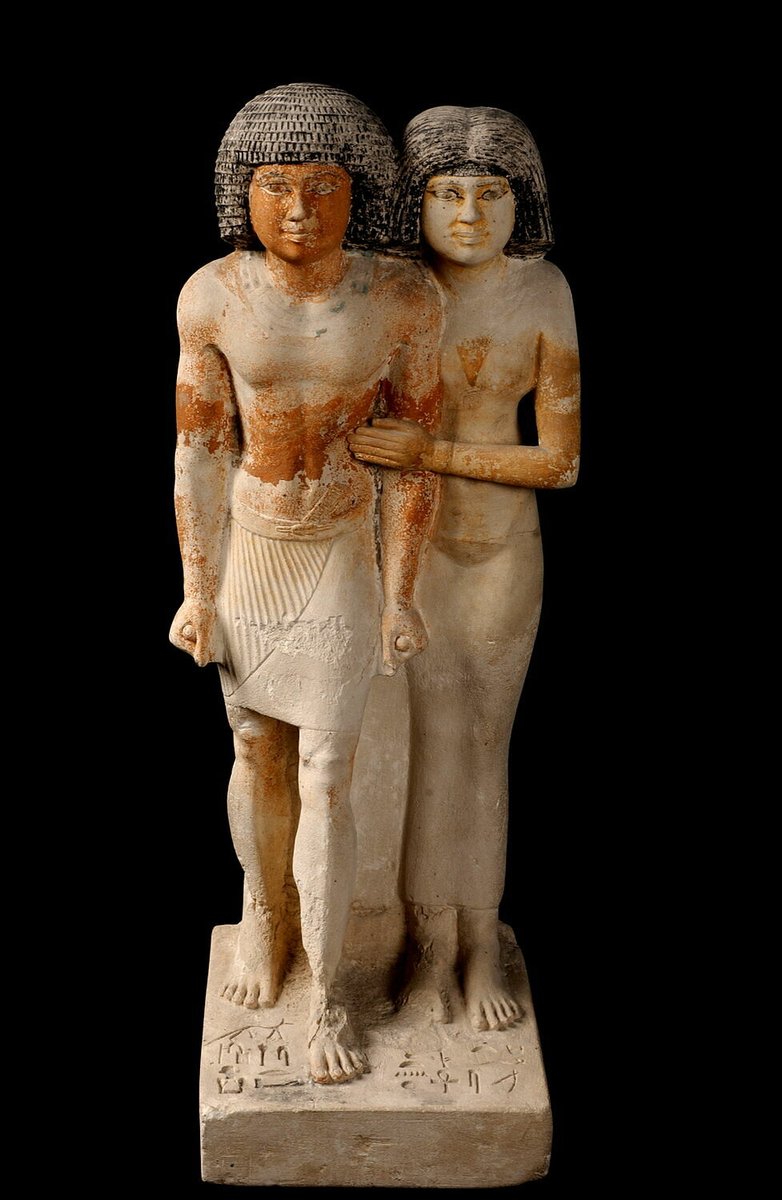
Egypt Museum
@egyptomuseum
Ancient Egypt art culture and history
Satellite view of the Pyramids of Giza, Egypt Photograph by @NASA, February 2002.

This relief at the seventh pylon Karnak Temple Complex symbolizes the victories of Thutmose III over his enemies, who cower as he prepares to crush them with his mace.

Gilded figures of Tutankhamun. White Crown of Upper Egypt - figure on the left / Red Crown of Lower Egypt - on the right.

Satis, “Mistress of Elephantine”, Upper Egyptian goddess who, along with Khnum and Anuket, formed part of the Elephantine Triad ▫ Satis (also spelt Satet) was the Upper Egyptian goddess of the inundation, war, and fertility, venerated as the divine “Mistress of Elephantine”. S…

Sculptor’s Vision: The Making of Nefertiti. Visual Evidence Linking the Plaster Head of Nefertiti to the Iconic Bust ▫ This visual comparison, compiled by us here at Egypt-Museum.com, presents a compelling side-by-side transformation of an unfinished plaster head of…

Portrait study of a woman, possibly a daughter of Akhenaten & Neferiti, possibly Akhenaten's secondary wife Kiya New Kingdom, 18th Dynasty, c. 1340 B.C. From the Workshop of the sculptor Thutmose at Tell el-Amarna. Gifted to the Neues Museum, Berlin, by James Simon, 1920.…

The mummy of Yuya, grandfather of king #Akhenaten & father of Queen Tiye, great-grandfather of #Tutankhamun ▫️Yuya was a courtier from Akhmim, Egypt, with titles such as "King’s Lieutenant Master of the Horse Father-of-the-god". His mummy was found in the Valley of the Kings…
Ancient Egyptian blue glazed faïence saucer, c. 1400-1325 B.C. Walter’s Art Museum. 48.1608

Mummy of king Thutmose IV (reign c. 1401-1391 B.C.) ▫️Thutmose IV is the father of Amenhotep III, grandfather of #Akhenaten and great-grandfather of #Tutankhamun. Grafton Elliot Smith (1871-1937), upon examining the body of the king, concluded that the king was very ill at the…

The Mummy's apparent "Curse": Wood and plaster mummy board belonging to a woman from Thebes, c. 950 B.C. ▫ This mummy board (British Museum. EA 22542) dating from Ancient Egypt's Third Intermediate Period, was the inspiration for various mythological tales associated with…

Glazed Inlay of a Falcon Ramesside Period, c. 1292-1069 B.C. British Museum. EA61835

Tribute from the regions south of Egypt parade tribute to king Thutmose IV, c. 1400 B.C. ▫ The first man carries rings of gold, while the second man carries an Ebony log upon his shoulder and a giraffe’s tail in his other hand. The third man has a monkey perched upon his…

Gold Sandals of King Shoshenq II Third Intermediate Period, 22nd Dynasty, ca. 887-885 BC. From Tanis. Now in the Egyptian Museum, Cairo. JE72166-A JE72166-B Read more: egypt-museum.com/gold-sandals-o…

It is thought that Alexander the Great was born on the 20th of July, 356 B.C., and so on this date, we share with you an image where Alexander himself is depicted at Karnak Temple as pharaoh, stood in praise before the god Amun. Most famously, Alexander founded the capital of…

Tomb of #Amenemheb, a commander under Thutmose III. On the lintel, the deceased appears in a hunting scene. Theban necropolis (TT85), Sheikh Abd el-Qurna.

Pair of Golden Sandals of Tutankhamun These particular golden sandals have engraved decoration that replicates woven reeds. Created specifically for the afterlife, they still covered the feet of Tutankhamun when Howard Carter unwrapped the mummy. The last stage of the embalming…

Cambyses II of Persia defeats Psamtik III of Egypt ▫️This is a chalcedony (quartz) Achaemenid cylinder seal, known today as the Zvenigorodsky seal, and dates from Late 500 B.C. – 400 B.C., around the time of the Persian conquest of Egypt. This is a scene you are used to…

Terracotta painted sculpture of a woman mourning, thought to be a representation of Isis lamenting the loss of Osiris New Kingdom, 18th Dynasty, c. 1550-1292 B.C. Musée du Louvre. E 27247

A swallow perched atop a wrapped mummy Pharaonic Roll No. 5, c. 1300–1200 B.C. ▫ This profoundly symbolic composition, fits seamlessly within the visual and spiritual language of the Book of the Dead, particularly in relation to Spell 86: “Spell for becoming a swallow”.…

Painted limestone statue of Raherka and Meresankh, c. 2350 B.C. ▫ Raherka held high administrative responsibilities. He was an “inspector of scribes of the jackal”. Meresankh’s title was “King’s acquaintance”, which means she had access to the royal palace. The statue was…
